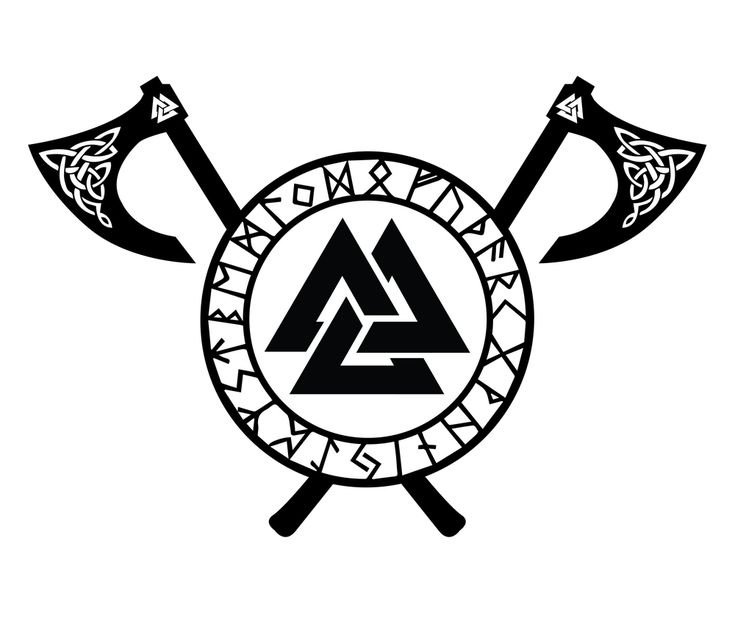Las fuentes de la mitología nórdica son (principalmente) las Eddas, la Edda Mayor y la Edda menor.
La Edda Mayor, que es también la más antigua, es una colección de poemas anónimos. El idioma es islandés y data del año 1000 o incluso antes. Se pueden dividir los poemas en dos grupos: poemas míticos que hablan sobre la creación y el fin del mundo, y los poemas heroicos que hablan principalmente sobre Odin y Thor.
La Edda Menor es también llamada la Edda de Snorre Sturluson quien lo escribió alrededor de 1220. Es un manual de poesía para los escaldos. Consta de tres partes:
Gylfaginning es una descripción de la mitología, es decir el mito de la creación del mundo, de los dioses y de sus vidas. El propósito de contar los mitos era dar a los escaldos la base de su poesía.
Skáldskaparmál es una presentación sistemática del lenguaje de los escaldos, y contiene asimismo muchas citas de poemas de escaldos denominados y anónimos.
Hattal significa registro de metros. Consta de un poema de 102 estrofas, cada una con su propia peculiaridad métrica o lingüística, mostrando así las reglas del lenguaje poético.
El principio, érase el Frío y el Calor. El frío era Nilfheim, un mundo de oscuridad, frío y niebla. El calor era Muspell, el mundo del eterno calor. Entre estos dos mundos existía un gran vacío con el nombre de Ginnungagup. En Ginnungagup surgió la vida al encontrarse el hielo de Niflheim y el fuego de Muspell. De este encuentro entre el frío y el calor nacieron primero el ogro Ymer y después la gigante vaca llamada Audumbla. Ymer vivió de la leche de Audumbla, y de su sudor nació una pareja de gigantes, y de sus pies un hijo. Ese fue el origen de los “gigantes de escarcha”, también llamados yotes. Audumbla vivió lamiendo la escarcha en las rocas salobres, de donde surgió poco a poco el primer hombre, Bure, y de él descienden los dioses llamados asas.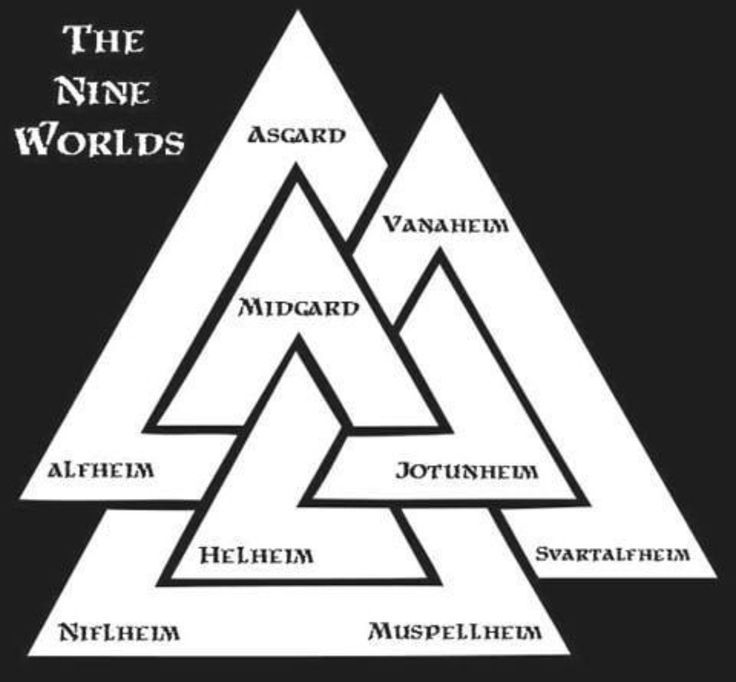
El hijo de Bure, de nombre Bor, se casó con la hija de un yote, Bestla, y juntos tuvieron tres hijos dioses: Odin, Vile y Ve. Odin y sus hermanos mataron a Ymer, y de su cuerpo crearon la tierra, de su sangre el mar, de su cráneo el cielo, de sus huesos las montañas, de su pelo los bosques, de su cerebro las nubes y de sus cejas un muro alrededor del inhabitable exterior. En este nuevo mundo crearon el mundo de los hombres, llamado Midgård. Luego, y para que los hombres no se sintieran solos, crearon en el centro de Midgård el mundo de los asas, Asgård, en cuyo centro crecía un gran fresno llamado Yggdrasil.
Yggdrasil fue el árbol de la vida, y si muriera, significaría la destrucción total del mundo. Yggdrasil sostenía el cielo y en su copa vivía un águila, y entre los ojos del águila un gavilán llamado Vederfølner. Por el tronco corría la ardilla Ratatosk pasando noticias e insultos entre el águila el dragón Nidhug que vivía al lado de una de las raíces de Yggdrasil.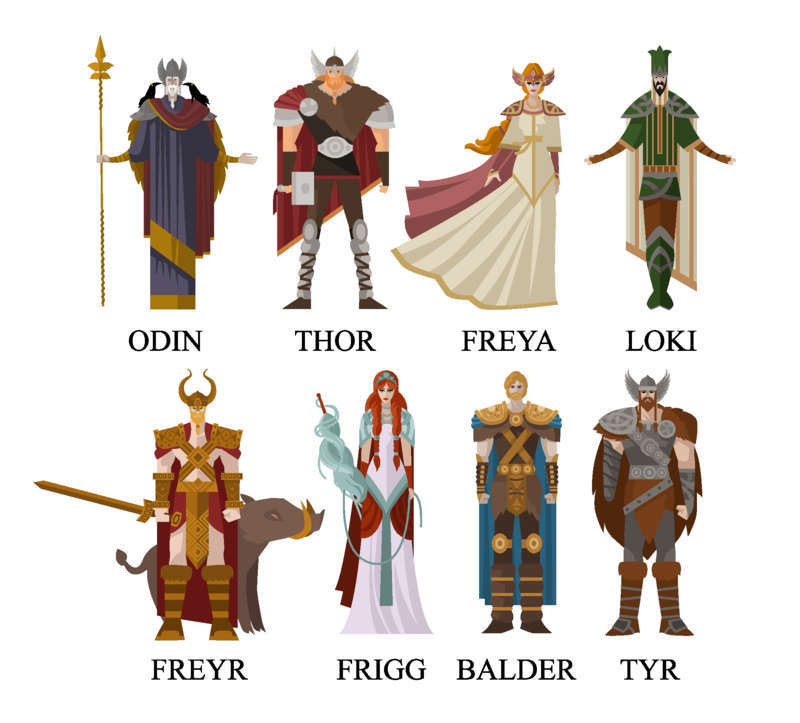 Cuatro ciervos corrían por sus ramas y el rocío que caía de su cornamenta formaba los ríos del mundo. Yggdrasil tenía tres raíces. Una yacía en Asgård, donde también se encontraba el pozo de Urd vigilado por tres nornas, encargadas de sacar agua del pozo para regar Yggdrasil. Estas tres nornas (diosas del hado) reinaban sobre el destino de los hombres y decidían si vivirían felices o no. La otra raíz yacía en Jotunheim, el mundo de los yotes (gigantes de escarcha), y aquí también se encontraba el pozo de Mimer. Era el pozo de la sabiduría y el que bebía del pozo sabría todo lo pasado y todo lo venidero. En el fondo del pozo se hallaba uno de los ojos de Odin, quien lo dio en prenda a cambio de sabiduría. La tercera raíz yacía en Niflheim, donde se encontraba también el dragón Nidhug.
Cuatro ciervos corrían por sus ramas y el rocío que caía de su cornamenta formaba los ríos del mundo. Yggdrasil tenía tres raíces. Una yacía en Asgård, donde también se encontraba el pozo de Urd vigilado por tres nornas, encargadas de sacar agua del pozo para regar Yggdrasil. Estas tres nornas (diosas del hado) reinaban sobre el destino de los hombres y decidían si vivirían felices o no. La otra raíz yacía en Jotunheim, el mundo de los yotes (gigantes de escarcha), y aquí también se encontraba el pozo de Mimer. Era el pozo de la sabiduría y el que bebía del pozo sabría todo lo pasado y todo lo venidero. En el fondo del pozo se hallaba uno de los ojos de Odin, quien lo dio en prenda a cambio de sabiduría. La tercera raíz yacía en Niflheim, donde se encontraba también el dragón Nidhug.
En Asgård tenía Odin su casa llamada Valhal, donde vivían los guerreros vikingos muertos (Einherjerne) y las valquirias. Las valquirias eran las vírgenes guerreras o espíritus de guerra de Odin, y las que llevaban a los guerreros muertos a Valhal.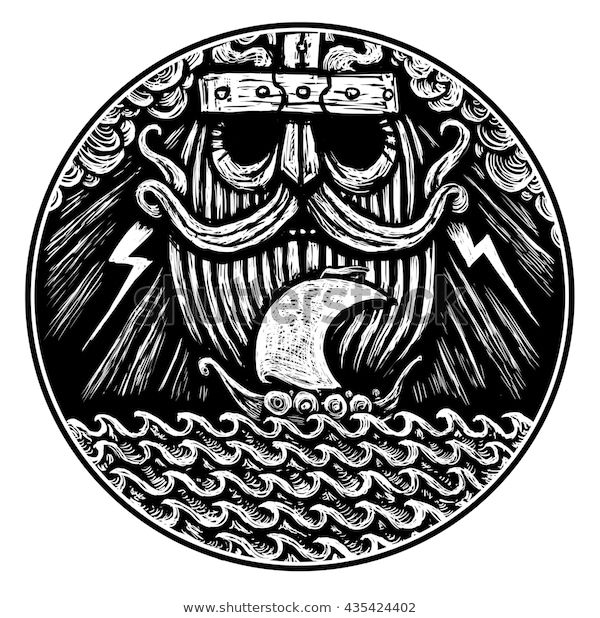 Valhal tenía 540 puertas y todas tan grandes que podían entrar 800 hombres a la vez. Su techo estaba cubierto de escudos dorados, encima de los cuales caminaba la cabra Heidrun. Heidrun comía las hojas de Yggdrasil y de su ubre caía la hidromiel que bebían los guerreros.
Valhal tenía 540 puertas y todas tan grandes que podían entrar 800 hombres a la vez. Su techo estaba cubierto de escudos dorados, encima de los cuales caminaba la cabra Heidrun. Heidrun comía las hojas de Yggdrasil y de su ubre caía la hidromiel que bebían los guerreros.
Todos los días los guerreros de Valhal salían al campo de batalla, aunque ahora sin que les ocurriera nada. Si se les caía un brazo o una pierna, las valquirias lo arreglaban por la noche. Después de la batalla venía el gran festín con mucha comida y bebida. Valhal era una especie de paraíso para los guerreros, algo que les quitaba el miedo a morir. Así se preparaban para la última batalla el día de Ragnerok, “el crepúsculo de los dioses”, el día del fin del mundo.
Odin era el dios supremo, padre de todos los hombres y de muchos de los dioses. Era el dios tanto de la sabiduría como de la guerra.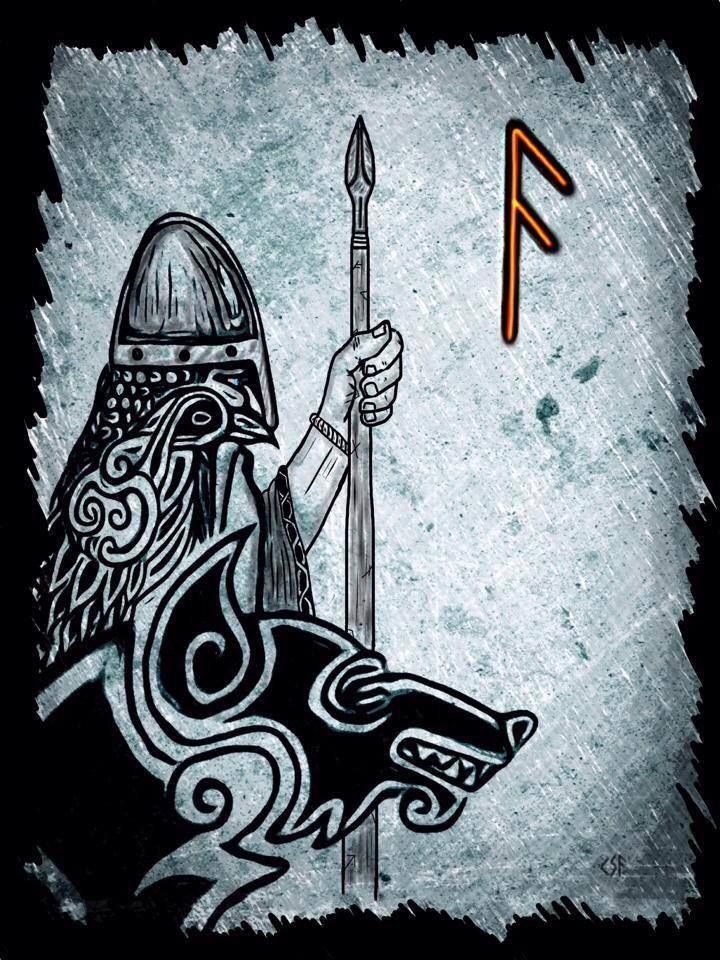 Dio un ojo en prenda a cambio de la sabiduría del pozo de Mimer. Cuando se sentaba en su trono Lidskjavl, veía todo lo que pasaba en el mundo. También tenían dos cuervos llamados Hugin y Munin que salían todas las mañanas y regresaban antes del desayuno para dar cuenta a Odin de todo lo que habían visto y oído. Gere y Frece son sus dos lobos, que comen toda la comida de Odin, porque él se mantenía únicamente de vino. Su caballo Sleipner tenía ocho piernas y corría más que cualquier otro animal u hombre tanto por aire, como por tierra y agua. También era el dios de la muerte de los guerreros, a los que llevan a Valhal al morir. Odin tuvo tres esposas: la primera era Jord o Fjordgyn con quien tuvo a Thor; la segunda se llamaba Frigg y era su favorita y con ella tuvo el hijo Balder; la tercera era Rinda, con quien tuvo a su hijo Vali que sobrevivirá al Ragnerok.
Dio un ojo en prenda a cambio de la sabiduría del pozo de Mimer. Cuando se sentaba en su trono Lidskjavl, veía todo lo que pasaba en el mundo. También tenían dos cuervos llamados Hugin y Munin que salían todas las mañanas y regresaban antes del desayuno para dar cuenta a Odin de todo lo que habían visto y oído. Gere y Frece son sus dos lobos, que comen toda la comida de Odin, porque él se mantenía únicamente de vino. Su caballo Sleipner tenía ocho piernas y corría más que cualquier otro animal u hombre tanto por aire, como por tierra y agua. También era el dios de la muerte de los guerreros, a los que llevan a Valhal al morir. Odin tuvo tres esposas: la primera era Jord o Fjordgyn con quien tuvo a Thor; la segunda se llamaba Frigg y era su favorita y con ella tuvo el hijo Balder; la tercera era Rinda, con quien tuvo a su hijo Vali que sobrevivirá al Ragnerok.
Thor era el dios de la guerra y la lucha salvaje. Era el hijo de Odin, y el más fuerte de todos los dioses .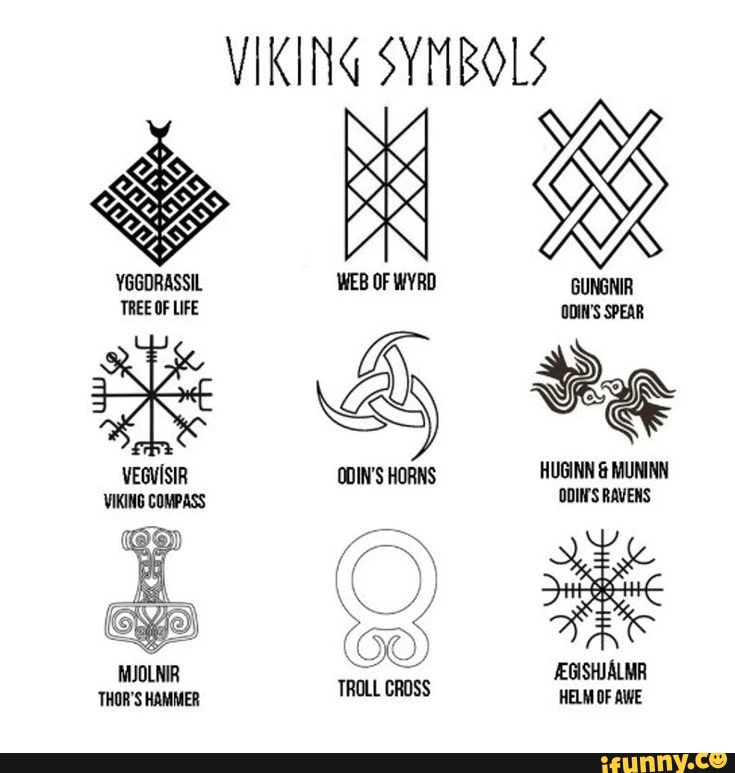 Siempre llevaba su martillo Mjølner que tenía la maravillosa capacidad de siempre dar en el blanco para después regresar a su dueño. Cuando lo tiraba se veían relámpagos en el cielo y sonaban truenos cuando viajaba en su carro llevado por dos machos cabríos de nombre Tandgnojst y Tandgrisner. Los machos cabríos podría ser sacrificados al atardecer y luego resucitar la mañana siguiente, si se tenía cuidado de no romper ningún hueso y si se recogían todos los huevos y se metían en la piel del animal. También poseía un cinturón de fuerza que doblaba su ya de por si considerable fuerza y unos guantes de hierro. Thor estuvo casado con Sif y tuvo tres hijos; Magni, Modi y Trud.
Siempre llevaba su martillo Mjølner que tenía la maravillosa capacidad de siempre dar en el blanco para después regresar a su dueño. Cuando lo tiraba se veían relámpagos en el cielo y sonaban truenos cuando viajaba en su carro llevado por dos machos cabríos de nombre Tandgnojst y Tandgrisner. Los machos cabríos podría ser sacrificados al atardecer y luego resucitar la mañana siguiente, si se tenía cuidado de no romper ningún hueso y si se recogían todos los huevos y se metían en la piel del animal. También poseía un cinturón de fuerza que doblaba su ya de por si considerable fuerza y unos guantes de hierro. Thor estuvo casado con Sif y tuvo tres hijos; Magni, Modi y Trud.
Freya era la diosa del amor y de la fertilidad, la más bella de todas las diosas. También era la que enseñaba a los dioses el arte de la magia. Tenía una manta mágica de plumas con la que se transformaba en un halcón, y un collar llamado Brisingegamen. Montaba en un carro llevado por dos gatos.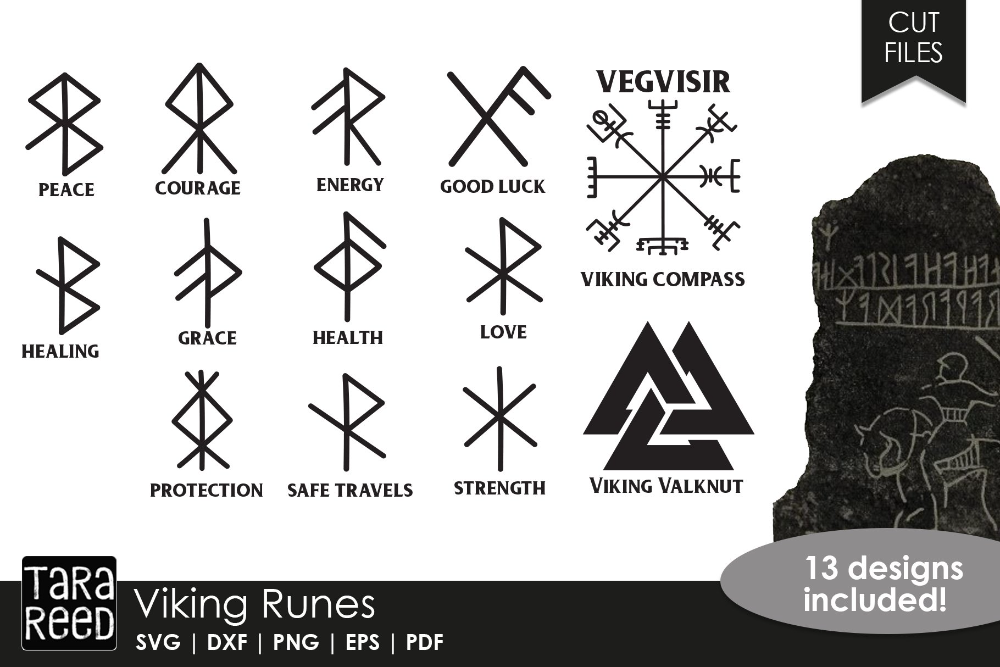 Lloraba con lágrimas de oro. Freya y Odin se repartían entre ellos los guerreros muertos.
Lloraba con lágrimas de oro. Freya y Odin se repartían entre ellos los guerreros muertos.
Frey era el hermano de Freya, y como ella dios del amor y de la fertilidad. Tenía el maravilloso barco llamado Skidbladnir, que se desplegaba después de utilizarlo y siempre tenía un viento favorable al izar la vela. Tenía también una espada que blandía sólo, y un jabalí mágico, Gullinbursti, que corría muy deprisa por tierra y por mar.
Heimdal hijo de Odin, tenía ocho hermanas como madre. Es el guardián del puente Bifrost que va de Midgard a Asgard, por lo que los dioses le han dotado de una visión y un oído extraordinarios. Ve a una distancia de más de 100 millas y oye crecer la lana en los lomos de los corderos. Es el que anunciará el comienzo de Ragnerok haciendo sonar su cuerno Gjallarhorn que se oirá en todo el mundo.
Balder era el dios de la luz y de la verdad.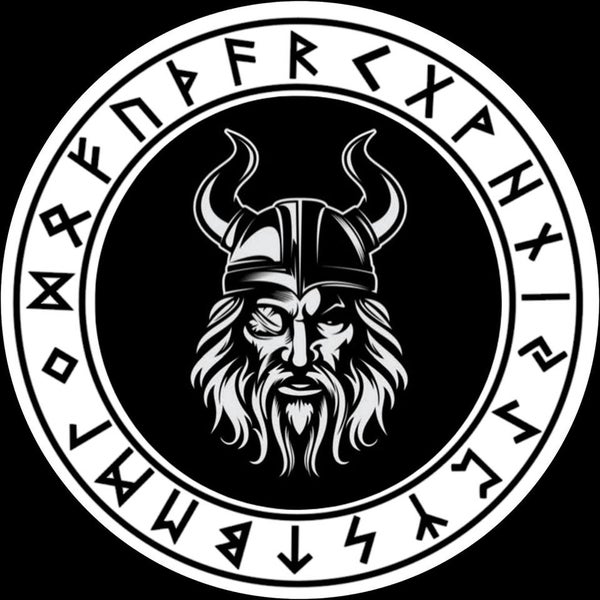 Era hijo de Odin y Frigg. Vivía en el palacio Breidablik, cuyo techo era de oro y cuyas columnas de plata maciza. Nada falso podía entrar por sus puertas. Por medio de un sueño, se conoce que Balder va a morir joven. Odin pide a su esposa Frigg (diosa del matrimonio y de la naturaleza salvaje), la madre de Balder, que haga jurar a todos los vivientes, a todas las fuerzas y a todas las cosas del universo que no le harán daño a Balder. Para celebrar que Balder ya era invencible, los otros dioses se divertían con un juego, en que todos podían lanzar lo que quisieran contra él. Pero Frigg había dejado sin juramento a un pequeño brote de muérdago, y Loke, disfrazado de anciana, se enteró y fue en busca del brote. Se lo dio al hermano ciego de Balder, Hodur, quien, con su ayuda, lo lanzó contra su hermano matándole. Por petición de Odin, la reina del infierno, Hel, accedió a devolver a Balder al mundo de los vivos a condición de que absolutamente todo el universo llorara por él. Lo hace todo el universo menos una vieja bruja llamada Thokk, que, en realidad, era Loke disfrazado de nuevo.
Era hijo de Odin y Frigg. Vivía en el palacio Breidablik, cuyo techo era de oro y cuyas columnas de plata maciza. Nada falso podía entrar por sus puertas. Por medio de un sueño, se conoce que Balder va a morir joven. Odin pide a su esposa Frigg (diosa del matrimonio y de la naturaleza salvaje), la madre de Balder, que haga jurar a todos los vivientes, a todas las fuerzas y a todas las cosas del universo que no le harán daño a Balder. Para celebrar que Balder ya era invencible, los otros dioses se divertían con un juego, en que todos podían lanzar lo que quisieran contra él. Pero Frigg había dejado sin juramento a un pequeño brote de muérdago, y Loke, disfrazado de anciana, se enteró y fue en busca del brote. Se lo dio al hermano ciego de Balder, Hodur, quien, con su ayuda, lo lanzó contra su hermano matándole. Por petición de Odin, la reina del infierno, Hel, accedió a devolver a Balder al mundo de los vivos a condición de que absolutamente todo el universo llorara por él. Lo hace todo el universo menos una vieja bruja llamada Thokk, que, en realidad, era Loke disfrazado de nuevo.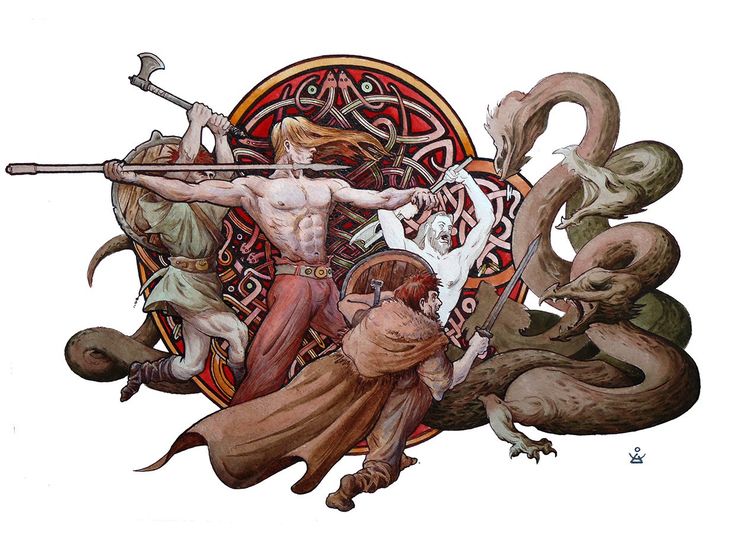
Loke era en realidad un yote, un gigante de las escarchas. Llegó a Asgard porque se hizo hermano de sangre con Odin. Era el dios del engaño, de la mentira y del caos, un espíritu malvado, provocador de tumultos y ladrón. Tenía la capacidad de transformarse en cualquier animal. Era el principal responsable de la muerte de Balder, pero también ayudaba muchas veces a los dioses a salir de situaciones difíciles. Los dioses le dieron un castigo por la muerte de Balder. Le ataron a unas rocas grandes con las tripas de uno de sus hijos, y encima de su cabeza le colgaron una serpiente venenosa. Su mujer Sigyn recogía en una copa las gotas de veneno que continuamente caían sobre su cara. Pero cada vez que vaciaba la copa, le llegaban a caer algunas gotas, lo que le producía unos dolores tremendos. Cuando se retorcía de dolor, la tierra temblaba. Una vez iban a construir un muro alrededor de Asgard. Se ofreció un gigante para construirlo a cambio de la diosa Freya, junto con el sol y la luna.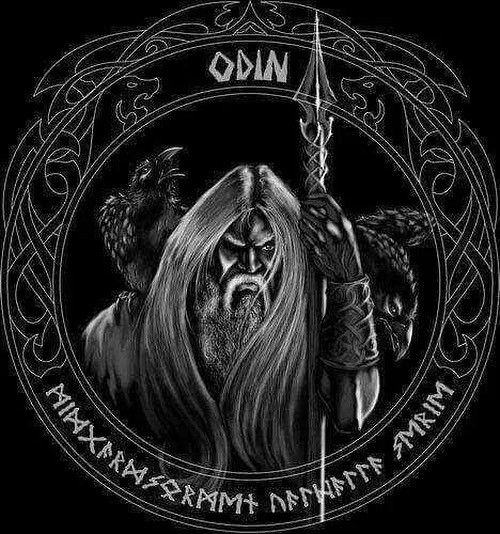 Los dioses aceptaron con tal de que acabara el muro en 6 meses, tal como les había aconsejado Loke. El gigante aceptó a condición de que le dejasen utilizar su caballo Svadilfare. El proyecto comenzó y avanzó muy deprisa. Al estar a punto de cumplirse los 6 meses, los dioses empezaron a preocuparse. No querían perder a Freya, ni al sol y a la luna, y le exigieron a Loke que buscara una solución. Loke se convirtió en una yegua que distrajo al caballo Svadilfare, sin el cual el gigante fue incapaz de cumplir el plazo. Luego Loke dio a luz a un caballo con ocho piernas y se lo regaló a Odin, quien lo llamó Sleipner. Con la giganta Angerbode tuvo tres monstruos, los más terribles del universo: Fenrisulven (el lobo Fenrir), Midgardsormen (la serpiente Midgard) y Hel, la reina del infierno.
Los dioses aceptaron con tal de que acabara el muro en 6 meses, tal como les había aconsejado Loke. El gigante aceptó a condición de que le dejasen utilizar su caballo Svadilfare. El proyecto comenzó y avanzó muy deprisa. Al estar a punto de cumplirse los 6 meses, los dioses empezaron a preocuparse. No querían perder a Freya, ni al sol y a la luna, y le exigieron a Loke que buscara una solución. Loke se convirtió en una yegua que distrajo al caballo Svadilfare, sin el cual el gigante fue incapaz de cumplir el plazo. Luego Loke dio a luz a un caballo con ocho piernas y se lo regaló a Odin, quien lo llamó Sleipner. Con la giganta Angerbode tuvo tres monstruos, los más terribles del universo: Fenrisulven (el lobo Fenrir), Midgardsormen (la serpiente Midgard) y Hel, la reina del infierno.
Fenrisulven llegó a Asgard siendo un cachorro para que los dioses lo vigilaran, pero enseguida se hizo muy grande y sólo el dios Thor, Tyr, se atrevía a darle de comer.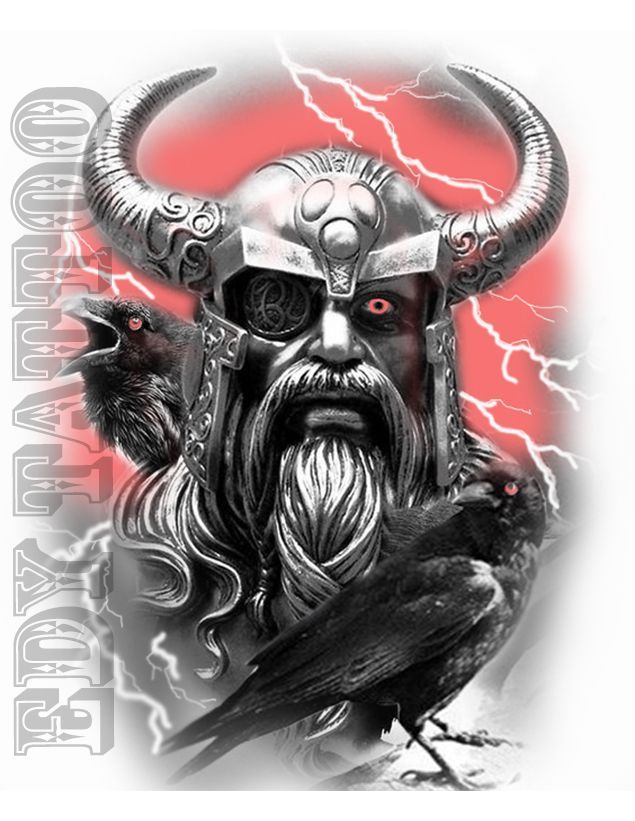 Se había predicho que él y su familia serían los responsables de la destrucción del mundo, por lo que al final los dioses querían atarle. Lo intentaron con dos cadenas distintas, pero Fenrisulven rompió las dos. Al final los dioses acudieron a los enanos herreros, quienes hicieron una cadena con 6 cosas: las pisadas de un gato, la barba de una virgen, las raíces de una montaña, los sueños de un oso, el aliento de un pez y el escupitajo de un pájaro. Fenrisulven ya no se fiaba de los dioses aunque Gleipner más bien parecía un hilo de seda, y dijo que sólo se dejaba poner la cadena si alguno de los dioses se atrevía a meter el brazo en su boca. El único que se atrevió fue Tyr. Fenrisulven quedó atrapado por Gleipner y Tyr perdió el brazo. Permanecerá atado hasta el día de Ragnerok.
Se había predicho que él y su familia serían los responsables de la destrucción del mundo, por lo que al final los dioses querían atarle. Lo intentaron con dos cadenas distintas, pero Fenrisulven rompió las dos. Al final los dioses acudieron a los enanos herreros, quienes hicieron una cadena con 6 cosas: las pisadas de un gato, la barba de una virgen, las raíces de una montaña, los sueños de un oso, el aliento de un pez y el escupitajo de un pájaro. Fenrisulven ya no se fiaba de los dioses aunque Gleipner más bien parecía un hilo de seda, y dijo que sólo se dejaba poner la cadena si alguno de los dioses se atrevía a meter el brazo en su boca. El único que se atrevió fue Tyr. Fenrisulven quedó atrapado por Gleipner y Tyr perdió el brazo. Permanecerá atado hasta el día de Ragnerok.
Midgardsormen era una serpiente que vive en el mar que rodea la tierra. Igual que su hermano Fenrisulven, Midgardsormen se crió en Asgard. Cuando se hizo demasiado grande, Thor la tiró al mar para ahogarla.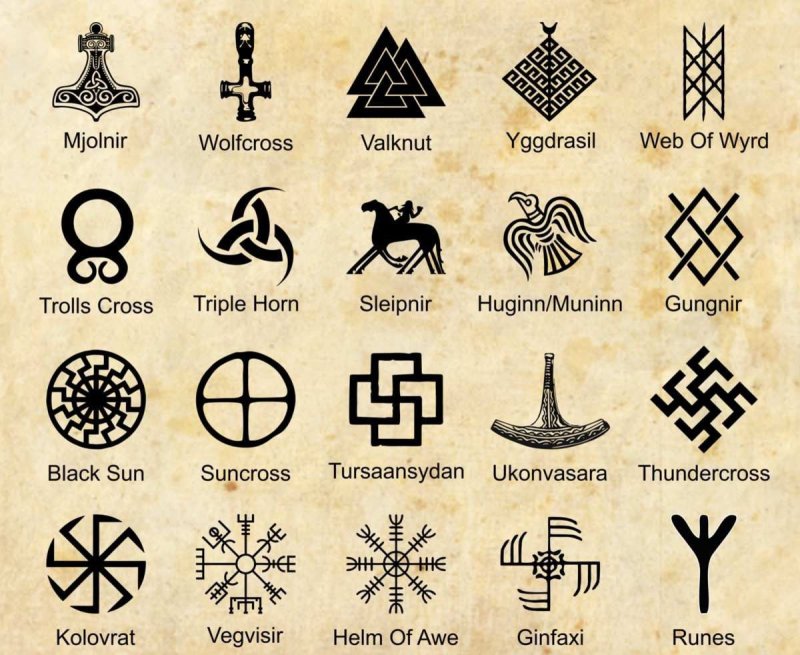 No podía matarla en la tierra, porque se derramaría su veneno envenenando todo a su alrededor. Se había predicho que lucharía con Thor cuando llegara Ragnerok y que se matarían mutuamente.
No podía matarla en la tierra, porque se derramaría su veneno envenenando todo a su alrededor. Se había predicho que lucharía con Thor cuando llegara Ragnerok y que se matarían mutuamente.
Hel era hermana de Fenrisulven y Midgardsormen. Es la reina del infierno Nielfheim y allí fue arrojada por los dioses. Vive en el palacio Eljudner (palacio de la miseria), cuya puerta principal se llamaba Falanda Forad (el principio) y cuyo vestíbulo se llamaba Bilkanda (maldición). Tenía dos servidores llamados Ganglad og Gangled (retraso y pereza). Su cama tenía el nombre de Keur (enfermedad e insomnio), su mesa Hungur (hambre), y su cuchillo Sultur (la sed).
Fuente de la imagen, Getty
Pie de foto,
Odin, conocido como Wotan en alemán y Woden en inglés arcaico, es el dios de todos los dioses en la mitología nórdica.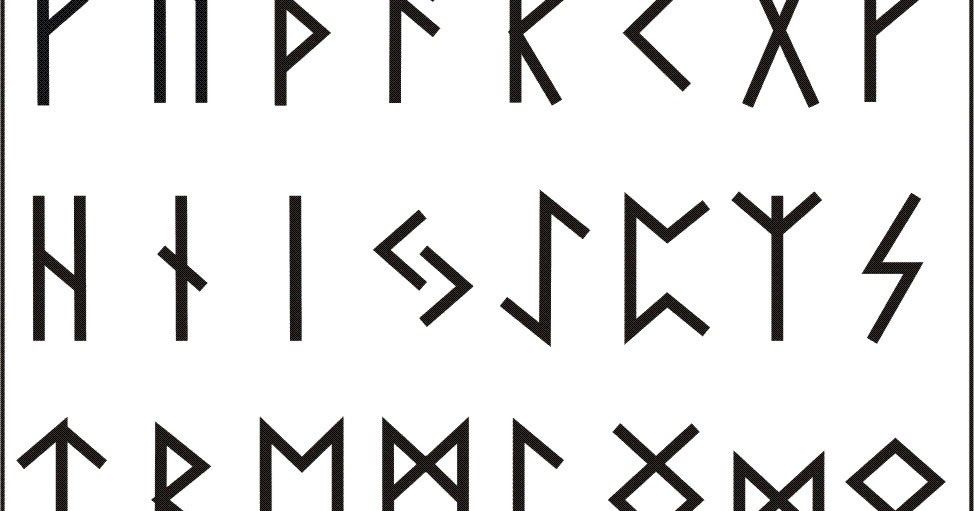
La construcción de un templo pagano en Islandia refleja el creciente interés que hay en ese país por rescatar la antigua mitología que dominaba las culturas nórdicas y germanas antes de la imposición del cristianismo hace más de mil años.
Con algunas variantes, las culturas del norte de Europa, Escandinavia, las islas británicas y las del mar del Norte, compartían una mitología de dioses guerreros y criaturas fantásticas en pugna constante.
El amplio panteón de los dioses nórdicos era para esas culturas la encarnación de las fuerzas de la naturaleza y la revelación de los misterios de la existencia. Inclusive, hay cierto sincretismo con otras creencias.
A pesar de que esta religión folclórica fue desplazada hace mucho tiempo, los nombres de estos dioses siguen vigentes en los días de las semanas de las lenguas germánicas. Conozca algunos de ellos.
—————————————————
Odin era el Dios de todos los dioses y reinaba desde Valhalla, el majestuoso salón de las deidades.
Como muchos otros dioses, Odin estaba dotado de varios poderes. Era el Dios de la guerra, de la poesía, la sabiduría y la muerte.
Lea: Islandia construirá su primer templo a dioses nórdicos en mil años
Al igual que su par griego Zeus, Odin era capaz de cambiar de figura pero, al contrario de Zeus que lo hacía para seducir mujeres y hombres, lo hacía para ganar sabiduría.
Su sed de conocimiento lo lleva a hacer sacrificios, incluyendo la pérdida de un ojo, pero su esfuerzo resultó en la inspiración de todos los poetas.
En la mitología germana se le conoce como Wotan, nombre que se transformó en Woden en inglés arcaico. De ahí viene la palabra Wednesday, miércoles en inglés, el día del Dios supremo.
—————————————————
Uno de los dioses más poderosos y populares de las principales mitologías.
Fuente de la imagen, BBC World Service
Pie de foto,
La popularidad del dios Thor lo ha llevado a ser representado en historietas y en el cine de Hollywood.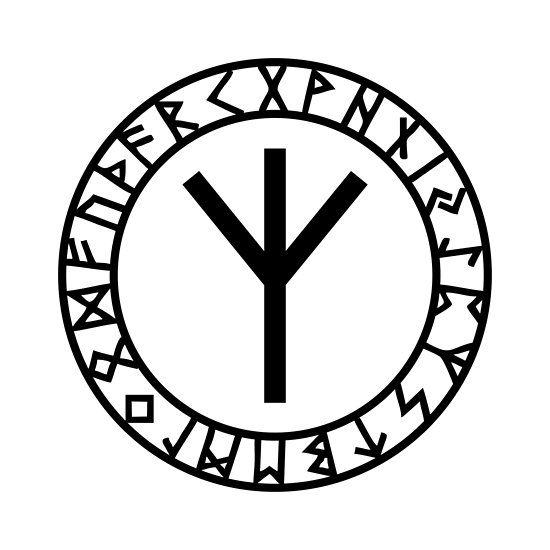
Hijo de Odin y de la esposa de éste, la giganta Jord, Diosa de la Tierra.
Thor, por su parte, era Dios de los relámpagos y también de la guerra. Se distinguía por su barba roja y ojos encendidos.
Cargaba un martillo como su arma predilecta y un cinturón de poder, con los que derrotaba a la rival raza de gigantes.
También viajaba en una carroza tirada por cabras que emitía el sonido de truenos cuando atravesaba los cielos.
A pesar de ser un guerrero, Thor también utilizó sus poderes para enseñar a los humanos varias destrezas como el oficio de forjar metales.
Tiene varios equivalentes en otras mitologías, pero se le asocia frecuentemente con el Dios romano Júpiter pues Thor da su nombre al inglés Thursday, el día jueves que, a su vez, tiene como raíz a Júpiter.
—————————————————
Era una de las deidades más adoradas por los humanos y se le conocía por su belleza.
Fuente de la imagen, PA
Pie de foto,
La mitología nórdica estaba llena de seres fantásticos como el lobo Fenrir, que devora a los dioses.
Freyja tenía un esposo (Odr) a quien amaba profundamente y cuando éste se alejaba de ella, Freyja lloraba lágrimas de oro.
La distinguían un precioso collar, una capa de plumas que le permitía transformarse en un ave para volar de un mundo a otro y una carroza tirada por enormes gatos.
Diosa del amor y la fertilidad, de la magia y la profecía, también de la riqueza e, inclusive, asociada con la guerra.
Aunque no era una guerrera propiamente dicha, su relación con la guerra vino de recibir a la mitad de los muertos en batalla.
En las mitologías nórdica y germánica Freyja acompañaba a los soldados en las guerras. Las Valkirias recogían a los caídos y los repartían sus almas entre Odin y Freyja.
Considerada una de las diosas más bondadosas, los amantes la invocaban en sus oraciones y se encomendaban a ella.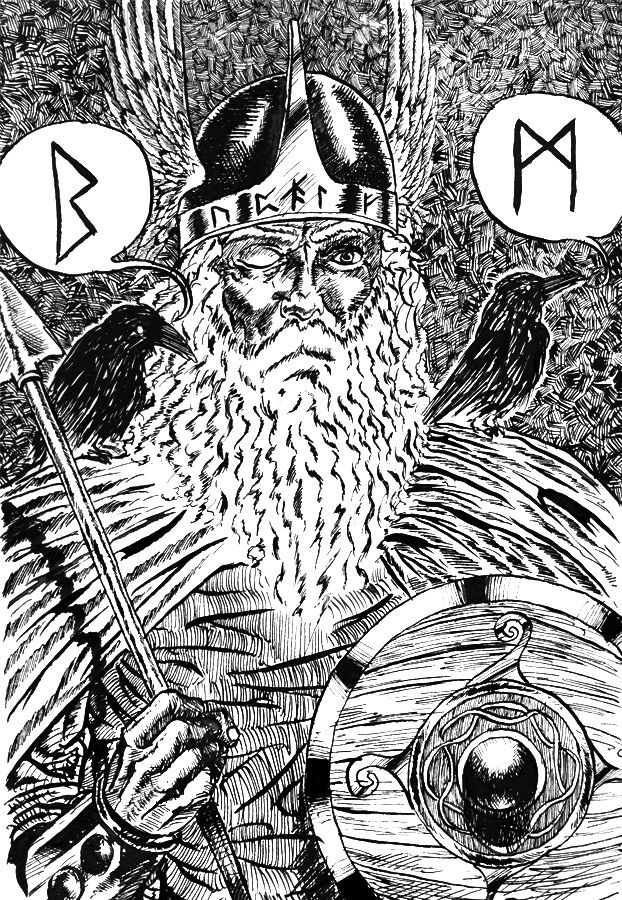
—————————————————
La esposa de Odin, madrastra de Thor, aunque en algunas versiones se le consideraba su hermana.
Fuente de la imagen, PA
Pie de foto,
Los pueblos nórdicos y germánicos identificaban los fenómenos de la naturaleza con sus dioses.
Era Diosa del matrimonio, la maternidad, la domesticidad pero también del amor, la fertilidad y las artes del hogar.
Gozaba de poderes proféticos y tenía conocimiento del destino de todos los humanos, pero nunca revelaba lo que sabía.
Era la única, aparte de Odin, a la que se le permitía ocupar el trono de los dioses para observar el universo.
Por la coincidencia de sus poderes, atributos y asociación con Odin, a Frigg y Freyja se las han confundido.
Particularmente porque Frjádagr en escandinavo arcaico, Freitag en alemán y Friday en inglés -que significan viernes- tienen su raíz en Frigg o Freyja.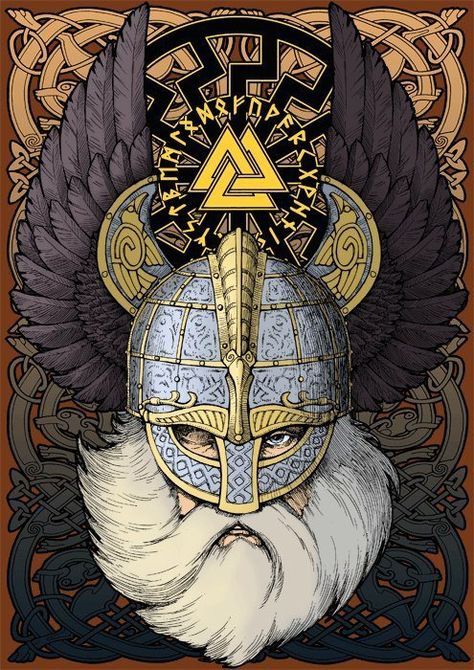
—————————————————
Gran parte de la mitología nórdica y germánica se desenvuelve en medio de guerras contra gigantes, enanos y criaturas fantásticas.
Pero si hubo un Dios dentro de este panteón que podía atribuirse el título de guerrero absoluto fue Tyr.
Fuente de la imagen, Getty
Pie de foto,
El dios guerrero Marte es el equivalente romano de Tyr.
Su equivalente romano es Marte y así como éste dio su nombre al día martes, Tyr origina el Týsdagr del escandinavo arcaico y el Tuesday en inglés.
Se le asociaba con la gloria heroica y con las leyes.
Su fortaleza solo fue superada por Thor. Pero Tyr era considerado valiente y sabio.
Sacrificó su mano derecha para que los dioses pudieran amarrar al amenazante lobo Fenrir. La iconografía del Dios siempre lo muestra manco y sujetando su espada en la mano izquierda.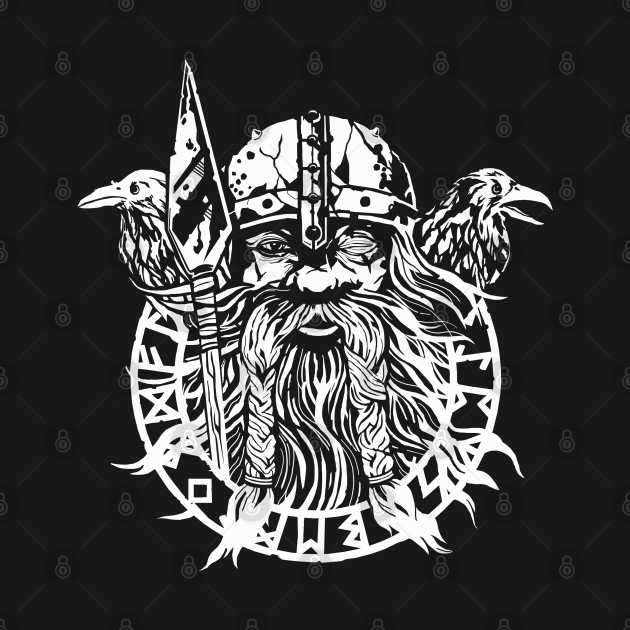
El soldado que tallara el símbolo de Tyr en su espada, dedicaba la batalla al Dios, quien lo fortalecería a favorecería en el combate.
You can find out if there are statistically significant differences in the responses received from different groups of respondents to questions in the survey. To use the statistical significance function in SurveyMonkey, you must:
By following the steps below, you can create a survey that displays statistical significance.
Step 1: Add Closed Questions to the Survey
In order to show statistical significance when analyzing the results, you will need to apply a comparison rule to a question in your survey. nine0005
You can apply a comparison rule and calculate statistical significance in responses if you use one of the following types of questions in your survey design:
It is necessary to make sure that the proposed answers can be divided into meaningful groups. The answer choices you select for comparison when you create a comparison rule will be used to cross-tab your data throughout the survey. nine0005
Step 2: Collect responses
Once you’ve completed your survey, create a collector to send it out. There are several ways to send surveys.
You need at least 30 responses for each answer option you plan to use in your comparison rule in order to activate and view statistical significance.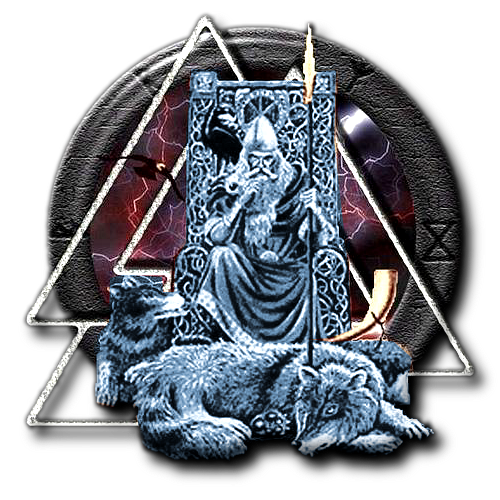
Step 3: Apply the comparison rule
To activate the statistical significance function, you need to add a comparison rule to the question in the survey in order to divide the respondents into groups. nine0005
How to apply the comparison rule
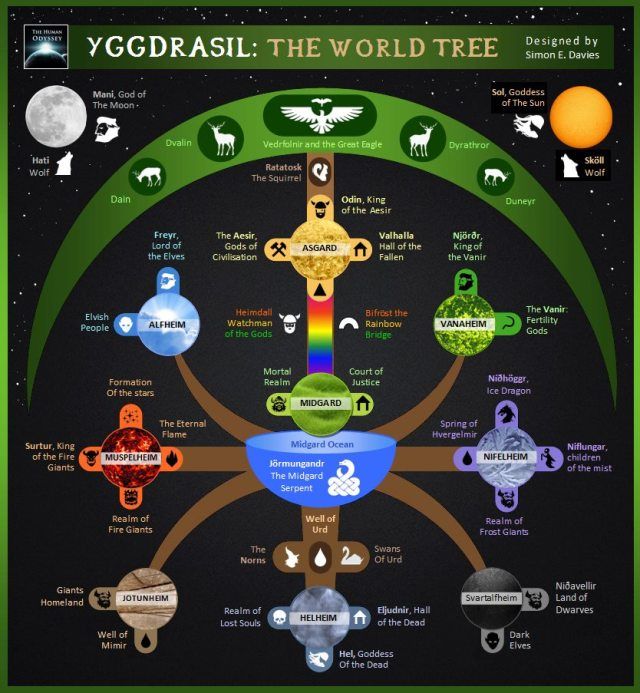
To edit groups after creating a rule, click the down arrow to the right of the rule in the left sidebar, and then select Edit Rule .
Step 4: Examine the datasheets
After applying the comparison rule, you can view the results of each group’s responses to each question in a visual comparison mode, which makes it easy to identify similarities and differences.
Answer options that are statistically significant are automatically highlighted in the data tables below the question charts.
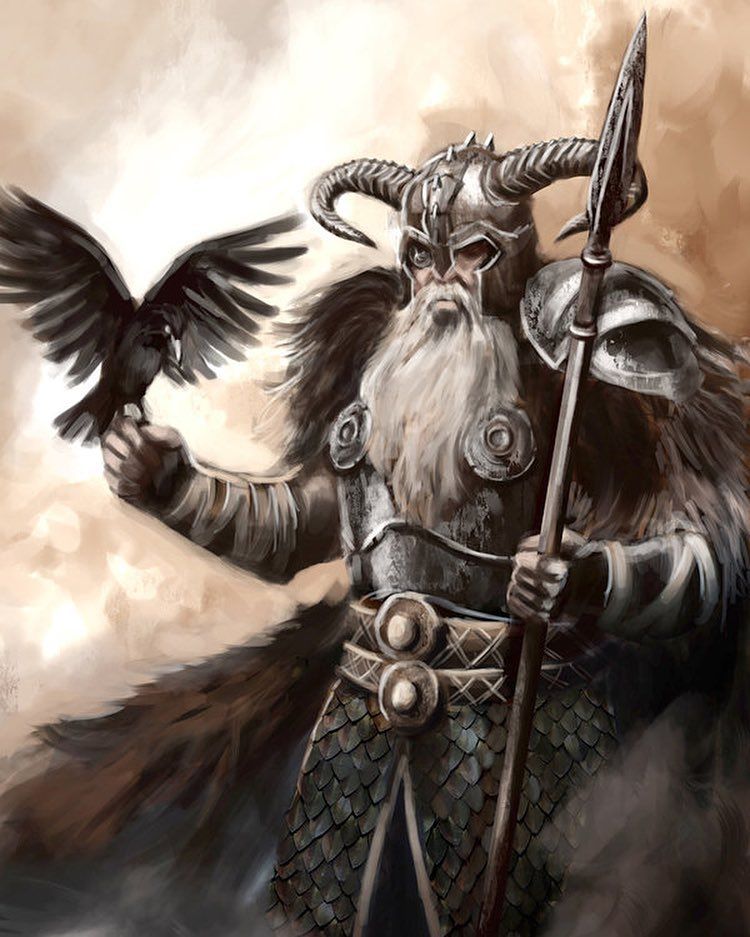
Hover over any answer option to see additional information. You will see one of the following messages:
| Message | Description |
| Significantly lower than | Compared to other major groups, respondents in this group are much less likely to choose this option. |
| Significantly higher than | Respondents in this group are much more likely to choose this option than other major groups. |
| More responses required | At least 30 responses are required to calculate statistical significance for this group. nine0109 |
| Combined response options | We are currently unable to calculate statistical significance for combined response options. Cancel combination of answer options. |
| Hidden response options | We are currently unable to calculate statistical significance for hidden response options. Unhide answer options.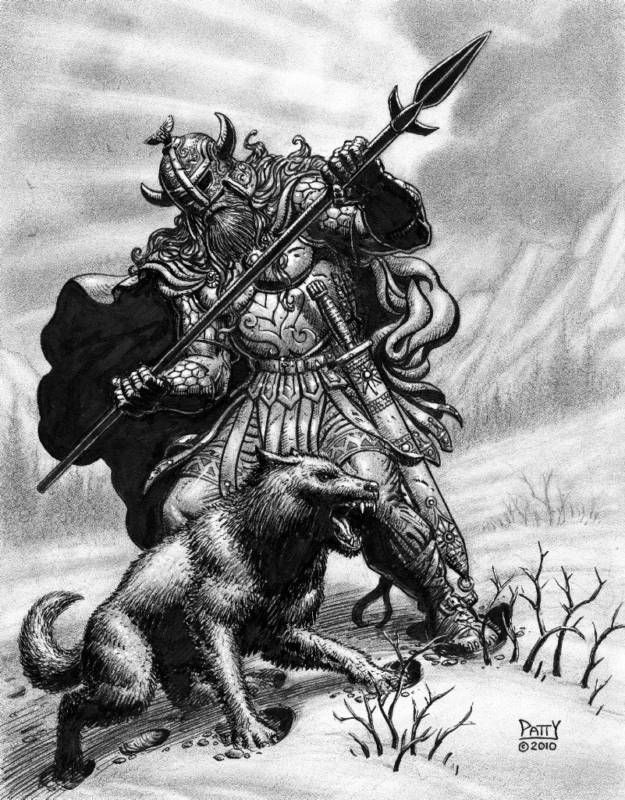 |
| No significant differences | Respondents from this group chose this option about as often as respondents from other groups. nine0109 |
For more information, scroll to the section “What is statistical significance?”
Step 5: Share results
Shared data pages
If you share your survey results online, those who view your shared data pages will also see statistical significance.
To create a shared data page with statistical significance, you need:
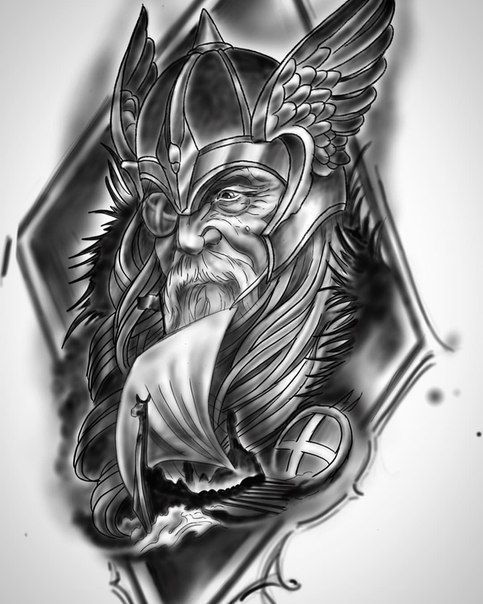
Export
Statistical significance is included in PDF and PPT summary exports. In the export files, answers that differ significantly are marked with the letter of the group of respondents from whose answers they differ significantly.
To export statistically significant results, apply your comparison rule and export the current view.
You want to know if men are significantly more satisfied with your product than women. nine0005
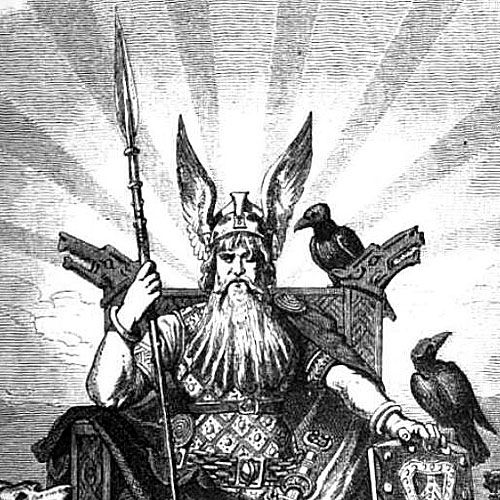 nine0010
nine0010
Statistically significant difference means that, using statistical analysis, there are significant differences between the answers of one group of respondents and the answers of another group. Statistical significance means that the numbers obtained are significantly different. Such knowledge will greatly help you in data analysis. However, the importance of the results obtained is determined by you. It is you who decides how to interpret the results of the surveys and what actions should be taken based on them. nine0005
For example, you get more complaints from female shoppers than from male shoppers. How to determine whether such a difference is real and whether action is required in this regard? One great way to test your observations is to conduct a survey that will show you whether or not male customers are significantly more satisfied with your product.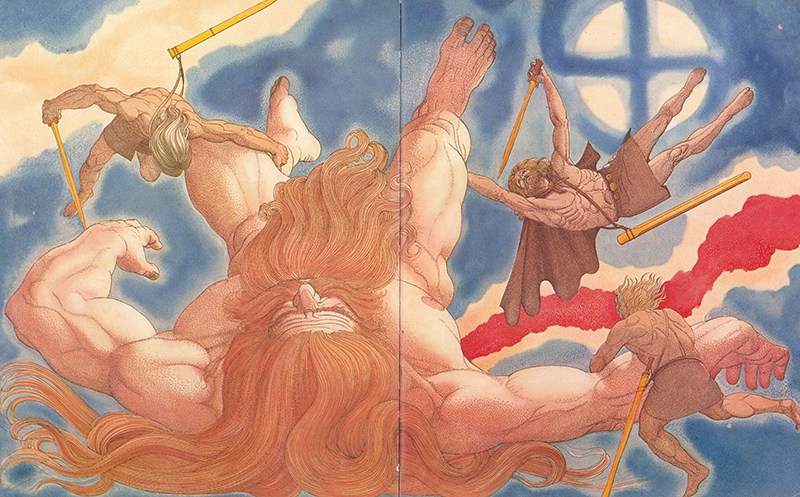 With the help of a statistical formula, our proposed statistical significance function will allow you to determine whether your product is really liked by men much more than women. This will allow you to take action based on facts, not guesswork. nine0005
With the help of a statistical formula, our proposed statistical significance function will allow you to determine whether your product is really liked by men much more than women. This will allow you to take action based on facts, not guesswork. nine0005
Statistically significant difference
If your results are highlighted in the data table, this means that the two groups of respondents are significantly different from each other. The term “significantly” does not mean that the figures obtained are of any special importance or significance, but only that there is a statistical difference between them.
No statistically significant difference
If your results are not highlighted in the corresponding data table, this means that, despite the possible difference in the two compared figures, there is no statistical difference between them. nine0005
Responses with no statistically significant difference demonstrate that there is no significant difference between the two compared items given the sample size you use, but this does not necessarily mean that they are not significant.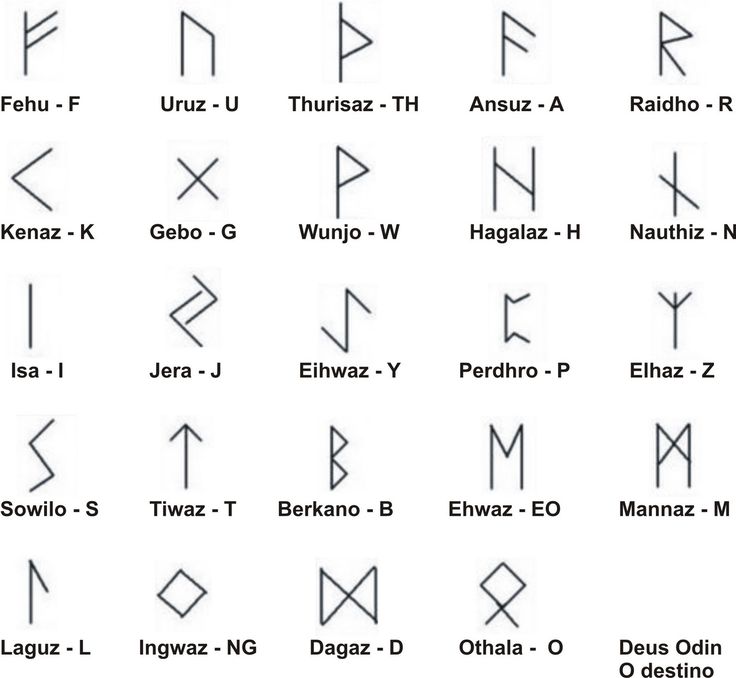 Perhaps by increasing the sample size, you will be able to identify a statistically significant difference.
Perhaps by increasing the sample size, you will be able to identify a statistically significant difference.
Sample size
If you have a very small sample size, only very large differences between the two groups will be significant. If you have a very large sample size, both small and large differences will be counted as significant. nine0005
However, if two numbers are statistically different, this does not mean that the difference between the results is of any practical importance to you. You will have to decide for yourself which differences are significant for your survey.
We calculate statistical significance using the standard confidence level of 95%. If an answer option is displayed as statistically significant, it means that there is less than a 5% chance of a difference between the two groups due to either chance alone or sampling error (often reported as: p<0.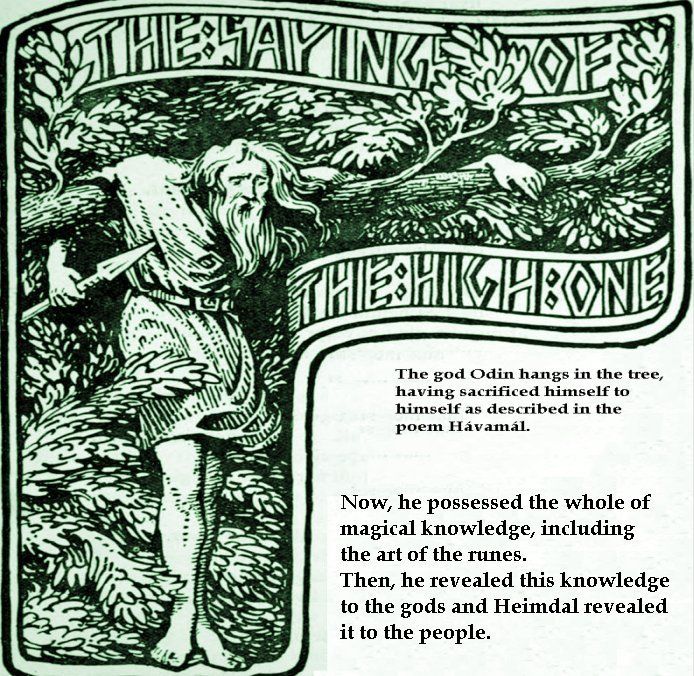 05). nine0005
05). nine0005
To calculate statistically significant differences between groups, we use the following formulas:
*1.96 is the value used for the 95% confidence level, since 95% of the range treated by Student’s t-distribution lies within 1.96 standard deviations from the average.
Continuing the example used above, let’s find out if the percentage of men who say they are satisfied with your product is actually significantly higher than the percentage of women. nine0005
Let’s say you surveyed 1,000 men and 1,000 women and found that 70% of men and 65% of women said they were satisfied with your product. Is the score at 70% significantly higher than the score at 65%?
Plug the following data from the survey into the proposed formulas:
Since the absolute value of the test statistic is greater than 1.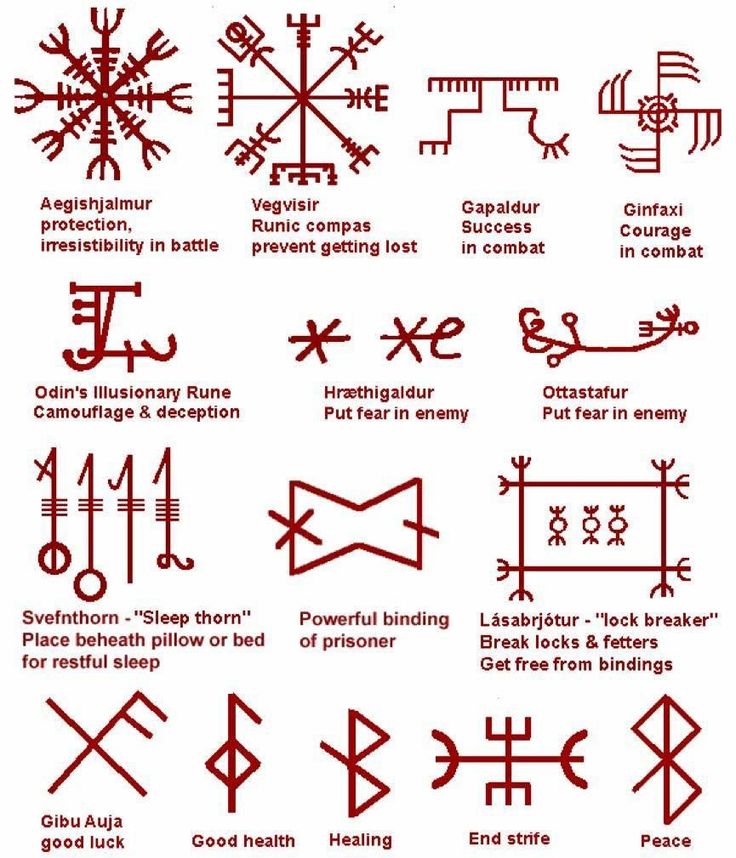 96, this means that the difference between men and women is significant. Compared to women, men are more likely to be satisfied with your product.
96, this means that the difference between men and women is significant. Compared to women, men are more likely to be satisfied with your product.
Hide statistical significance for all questions
To hide statistical significance for a single question:
The display option Swap Rows and Columns is automatically enabled when statistical significance display is enabled.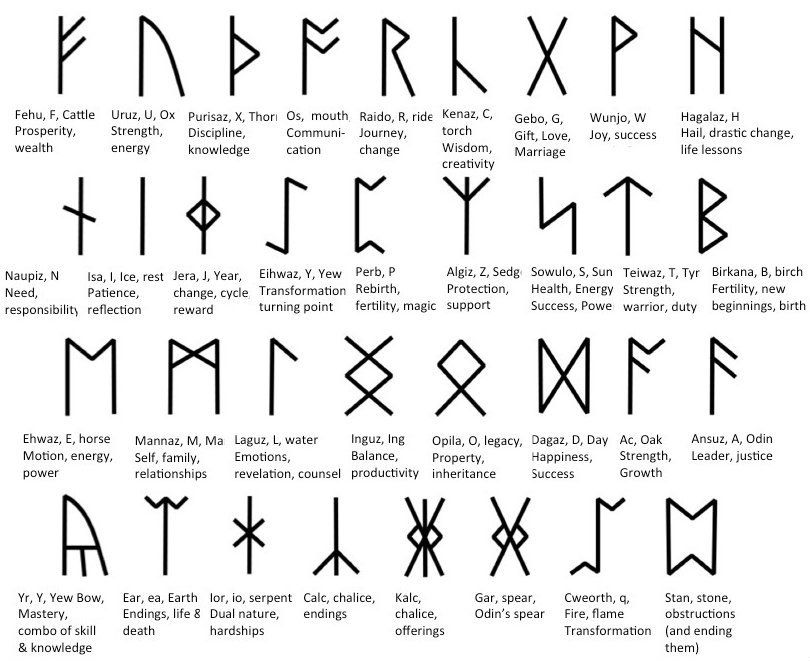 If you uncheck this display option, the display of statistical significance will also be disabled.
If you uncheck this display option, the display of statistical significance will also be disabled.
Scientists should stop being “dictated” by statistical significance in its traditional interpretation (when the statistical significance score is p should be less than 0.05) and stop using these categories in research, say the editors of The American Statistician special issue . A comment by several authors from this issue for Nature , according to them, was supported by more than 850 people (not a single signer from Russia is on the list).
As a rule, in a scientific study, the truth of the hypothesis, which is usually called the null one, that any effect, connection, influence of factors, difference between groups or other phenomenon is actually absent in the general population is tested – this hypothesis is considered true until proven otherwise. Analyzing the available data, scientists use statistical tests to assess how likely it is that this hypothesis is true.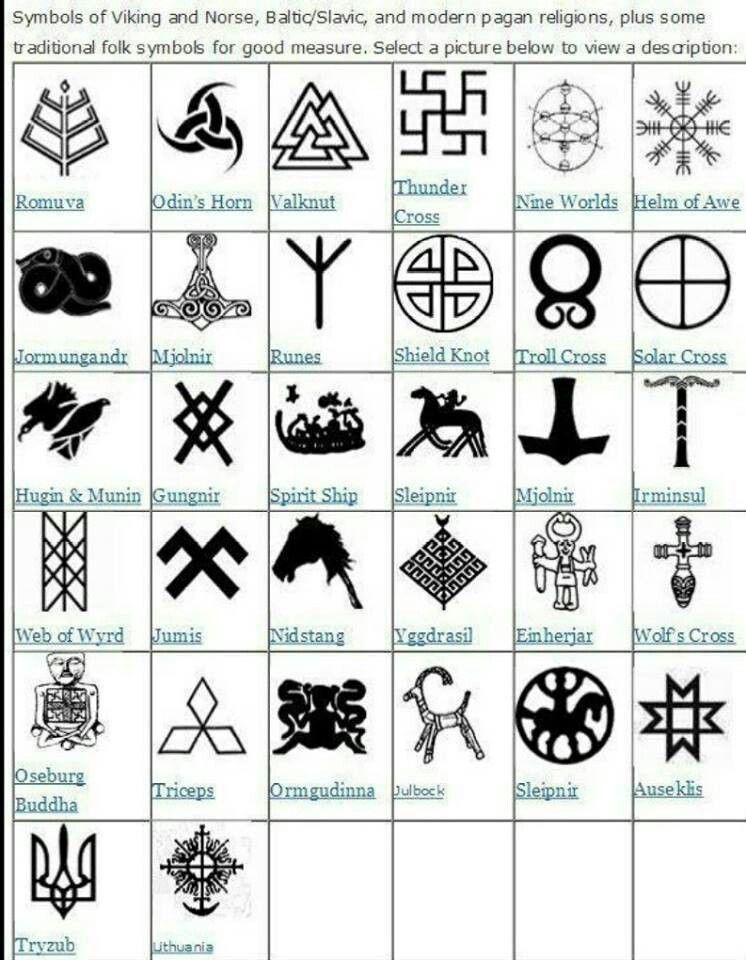 The significance level of a test is the probability of a so-called Type I error: rejecting a null hypothesis that is actually true. nine0005
The significance level of a test is the probability of a so-called Type I error: rejecting a null hypothesis that is actually true. nine0005
Normally, the threshold for a scientist to say that a result is statistically significant is p < 0.05, but for some tests, such as particle physics, more stringent criteria apply. Scientific journals prefer to publish statistically significant results, and this bias sometimes leads authors to use statistical manipulation to fit the results to this criterion. A recent example of this manipulation being exposed is the story of Brian Wonsink, which we covered on the You Just Can't Cook blog. In addition, the criterion of statistical significance is often used as an indicator of the success of the entire study: we wrote about the failure of the largest HIV prevention experiment to date, the conclusion of which was made to fail precisely because the difference between the experimental and control group was not significant. Finally, statistically significant results are important when revalidating a study: it is this criterion that is considered the criterion for the reproducibility of the work.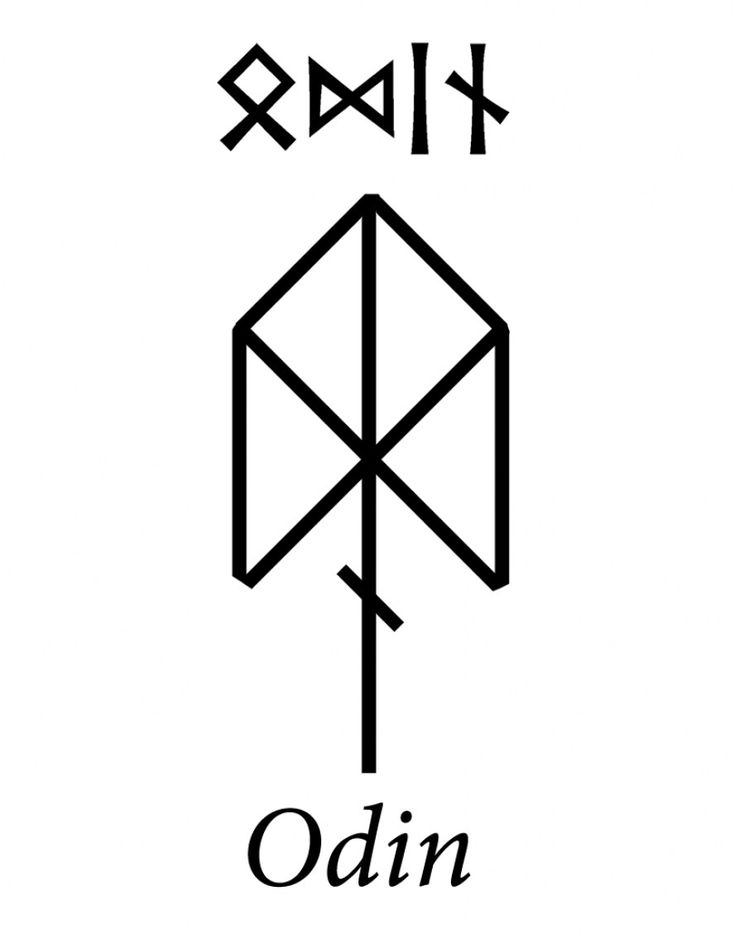 nine0005
nine0005
In a special issue of The American Statistician , statisticians from around the world discuss in 43 articles why the standard approach to statistical significance has become obsolete and needs to be rethought and reformed. The American Statistical Association previously made a similar call not to abuse statistical significance in 2016.
“Based on our analysis of the papers in this special issue and the literature on the topic in general, we conclude that it is time to stop using the term ‘statistically significant’… None of the values p does not guarantee the credibility, existence, truth or importance of any connection or effect. Thus, the label of statistical significance does not mean or suggest that the relationship or effect is likely, real, true, or important. In turn, the label of statistical insignificance does not mean that they are improbable, absent, false, or unimportant. For the honesty of the process of scientific publications and dissemination of information about scientific research, therefore, it is not necessary to evaluate whether the value exceeds p some arbitrarily set threshold to decide which works to publish and promote,” the editorial says.
One of the articles in the issue was written by renowned medical scientist, statistician, and science activist John Ioannidis, who describes the use of statistical significance as “the most commonly (mis)used way of drawing statistical inferences.” Ioannidis, in particular, emphasizes that lowering the threshold of statistical significance, for example, from 0.05 to 0.005, is a temporary measure that will only partially contain the wave of poor-quality work and delay what he calls “death by statistical significance” when these really low-quality, but “statistically significant” works will flood science. nine0005
In a comment for Nature , Blake McShane of Northwestern University in the United States, who has commented on the same subject before, and his colleagues point out that a statistically non-significant result does not actually prove the null hypothesis is true, and statistically significant does not prove the truth of some alternative hypothesis. These common misconceptions, they say, distort the true state of things and even lead to scientific conflicts where they should not be.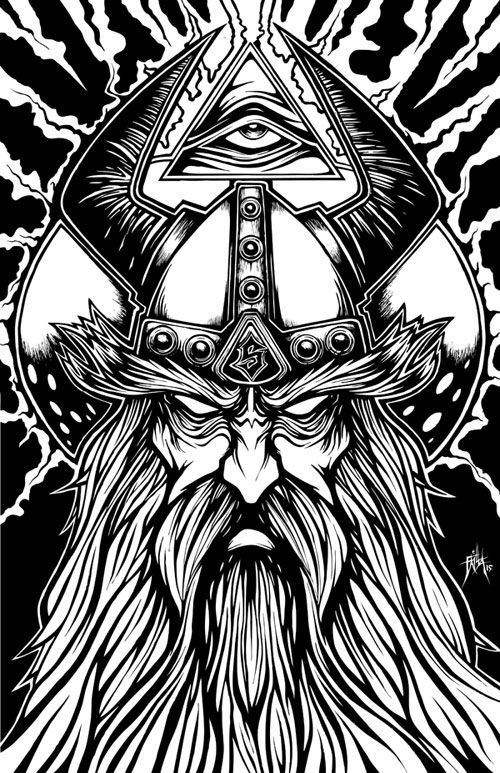 nine0005
nine0005
They provide an example of two statistical analyzes of the effects of anti-inflammatory drugs on the cardiovascular system. They found the same point estimate of effect (20% increased risk of atrial fibrillation for patients taking drugs), but due to study design, the confidence interval in one of them was from minus 3 percent to 48 percent ( p , according to the authors’ calculations comment, equal to 0.091, that is, the result is not significant), and in the second – from 9up to 33 percent ( p \u003d 0.0003, that is, the result is significant). Thus, the authors believe, although both studies indicate that the effect is likely to exist, one of them can be used to baselessly refute this effect.
They also remind you not to underestimate the factor of pure randomness in the results: due to this very randomness, you can always make a Type II error, that is, accept the null hypothesis as true, although in fact it is not. The statistical power parameter helps to estimate the probability of such an error (the higher it is, the lower the probability), and the power, in addition to the given significance level, depends on the magnitude of the desired effect itself and the size of the sample.